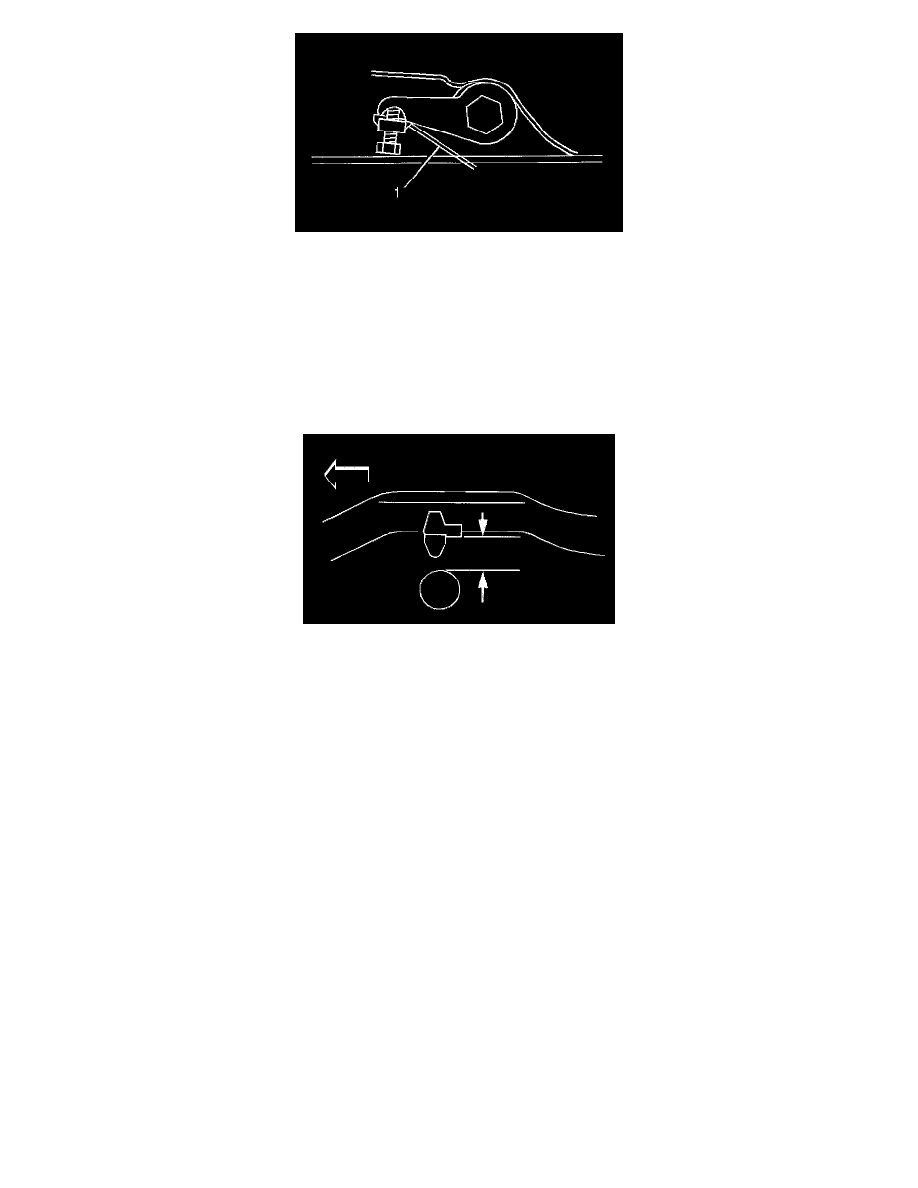Avalanche 1500 2WD V8-5.3L VIN T (2002)

1. For vehicles equipped with a torsion bar suspension turn the bolt (1) that contacts the torsion arm clockwise to raise the and counterclockwise to
lower the height adjustment. One revolution of the bolt (1) into the nut increases the Z height by approximately 6.0 mm (0.2 inch).
2. For vehicles without torsion bars, replace damaged or worn components as necessary.
D Height Measurement
The D height dimension measurement determines the proper rear end ride height. There is no adjustment procedure. Repair may require replacement
of suspension components.
1. With the vehicle on a flat surface, lift upward on the rear bumper 38 mm (1.5 inch).
2. Gently remove your hands. Allow the vehicle to settle into position.
3. Repeat the jouncing operation 2 more times for a total of 3 times.
4. Measure the D height by measuring the distance between the bumper bracket and the top of the rear axle tube.
5. Push the rear bumper downward to 38 mm (1.5 inch).
6. Gently remove your hands. Allow the vehicle to settle into position.
7. Repeat the jouncing operation 2 more times for a total of 3 times.
8. Measure the D height dimension.
9. The true D height dimension number is the average of the high and the low measurements.
10. If these measurements are out of specifications, inspect for the following conditions:
^
Sagging front suspension
^
Sagging rear leaf/coil springs
^
Worn rear suspension components, such as leaf spring bushings
^
Improper tire inflation
^
Improper weight distribution
^
Collision damage
